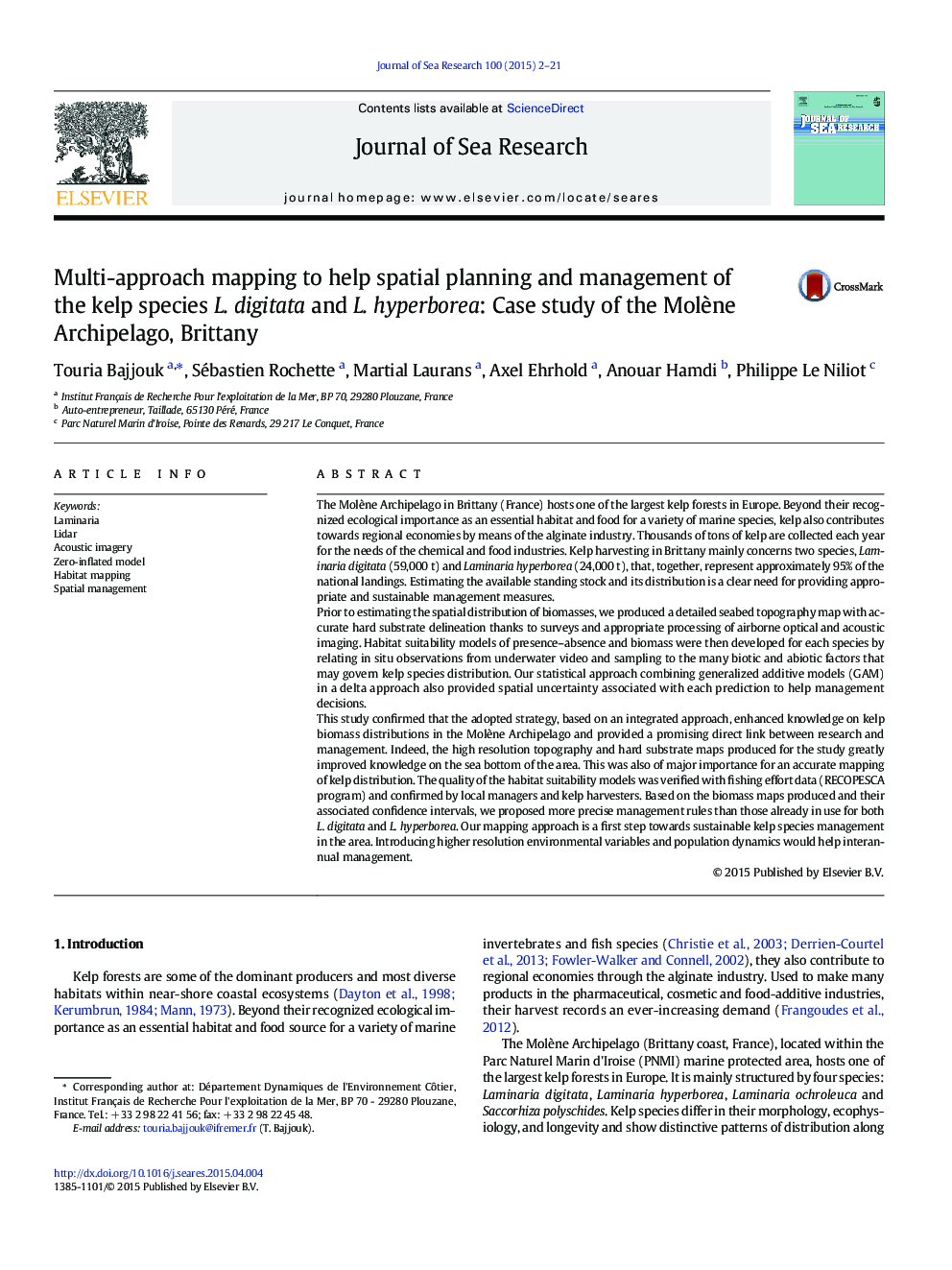| کد مقاله | کد نشریه | سال انتشار | مقاله انگلیسی | نسخه تمام متن |
|---|---|---|---|---|
| 4549606 | 1627474 | 2015 | 20 صفحه PDF | دانلود رایگان |

• Accurate maps of the topography and hard substrates were produced
• Zero-inflated biomass models based on presence–absence and biomass data from different sources were fitted with environmental data through Generalized Additive Models (GAM) for three Laminarian species.
• High resolution topography maps combined with the statistical models greatly increased knowledge on the laminarian biomass distribution and its confidence intervals in the Parc Marin d'Iroise (Brittany, France).
• This approach, directly linking researchers and managers, allowed for new resource management rules to be suggested.
The Molène Archipelago in Brittany (France) hosts one of the largest kelp forests in Europe. Beyond their recognized ecological importance as an essential habitat and food for a variety of marine species, kelp also contributes towards regional economies by means of the alginate industry. Thousands of tons of kelp are collected each year for the needs of the chemical and food industries. Kelp harvesting in Brittany mainly concerns two species, Laminaria digitata (59,000 t) and Laminaria hyperborea (24,000 t), that, together, represent approximately 95% of the national landings. Estimating the available standing stock and its distribution is a clear need for providing appropriate and sustainable management measures.Prior to estimating the spatial distribution of biomasses, we produced a detailed seabed topography map with accurate hard substrate delineation thanks to surveys and appropriate processing of airborne optical and acoustic imaging. Habitat suitability models of presence–absence and biomass were then developed for each species by relating in situ observations from underwater video and sampling to the many biotic and abiotic factors that may govern kelp species distribution. Our statistical approach combining generalized additive models (GAM) in a delta approach also provided spatial uncertainty associated with each prediction to help management decisions.This study confirmed that the adopted strategy, based on an integrated approach, enhanced knowledge on kelp biomass distributions in the Molène Archipelago and provided a promising direct link between research and management. Indeed, the high resolution topography and hard substrate maps produced for the study greatly improved knowledge on the sea bottom of the area. This was also of major importance for an accurate mapping of kelp distribution. The quality of the habitat suitability models was verified with fishing effort data (RECOPESCA program) and confirmed by local managers and kelp harvesters. Based on the biomass maps produced and their associated confidence intervals, we proposed more precise management rules than those already in use for both L. digitata and L. hyperborea. Our mapping approach is a first step towards sustainable kelp species management in the area. Introducing higher resolution environmental variables and population dynamics would help interannual management.
Journal: Journal of Sea Research - Volume 100, June 2015, Pages 2–21